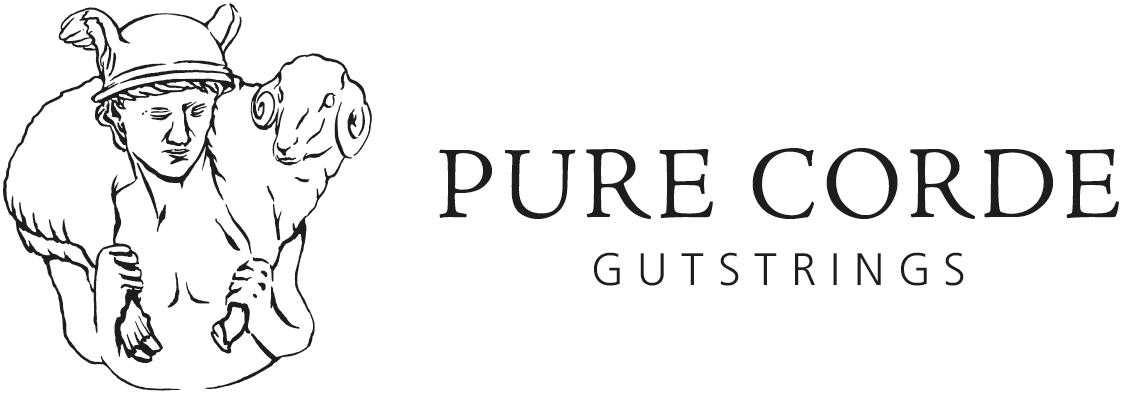The different requirements for gut strings on musical instruments

The tonal range of bowed instruments is largely determined by the individual string gauges, which means that the instrument’s various strings will differ greatly in diameter. String tension also plays a part, albeit a minor one. As a consequence, the requirements will vary significantly, in terms of the type of gut used as well as the manufacturing processes for each string. We therefore distinguish between treble strings, for the higher pitch ranges, strings for medium pitch, and bass strings.
An instrument’s treble strings have to be particularly tear-proof, since their tensile strength is used to the maximum (an instrument’s treble string should nearly always be stretched almost to breaking point). The necessary tear resistance is achieved through several specific processes during the manufacture of the string, such as the splitting of the guts, rinsing them in a variety of lyes, and the addition of alum and other tanning agents. In addition, the small degree of twisting of the gut fibres ensures the required toughness and tear resistance of the treble string.
The medium pitch range of an instrument demands a much softer quality of gut, in order to make the most of the instrument’s responsiveness, sonority and modulation properties. This type of string should receive as little chemical treatment as possible and doesn’t require split gut. Most importantly, these strings call for a very strong twisting of the gut which lends them maximum flexibility.
The bass strings, due to the many production methods available, are a different story. Up until ca. 1660, wound gut strings, if they were to be found at all, were a rarity. Musicians at the time had to cope with the very thick, unwound gut strings.
In order to make unwound gut strings playable as bass strings, they have to be extremely soft and possess, for us today, an unusually high tension (equal tension). With low-pitched strings, however, tear resistance is not a problem since the tension used is still a great deal below their tearing point, which means that the manufacturing process can just concentrate on making them as soft as possible. This is achieved by using untreated gut and multiple twisting. The method used here to twist the guts resembles techniques used in rope-making.
Since we are still working on producing satisfactory treble strings,Toro supply our treble strings made from sheep’s gut, which complement our Moroccan strings very well. For medium pitch ranges, we recommend our PURE CORD “high twist” gut strings, which we believe to be unique in their sound qualities and responsiveness.
For the lower pitch ranges, we suggest using our PURE CORDE “high twist” gut strings. Should you, due to their extreme thickness, find them lacking in responsiveness, we recommend the PURE CORDE “triple” strings. These sound softer, are even more responsive but might fall a little bit short on crispness.
We hope, you found this outline of interest. If you have any further questions, please do not hesitate to contact us. We will be pleased to assist you.
